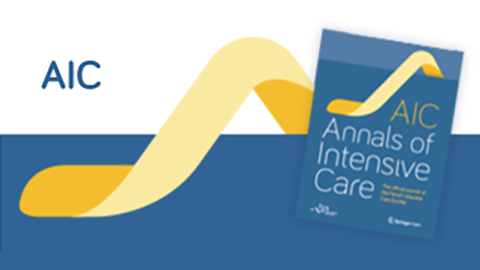06/08/2020


Source
Abstract
Hypoxemia is the main feature of COVID-19-related acute respiratory distress syndrome (C-ARDS), but its underlying mechanisms are debated, especially in patients with low respiratory system elastance (Ers). We assessed 60 critically ill patients hospitalized in our intensive care unit for C-ARDS. We used contrast transthoracic echocardiography to assess patent foramen ovale (PFO) shunt and transpulmonary bubble transit (TPBT). The median Ers was 32 cmH_2O/L. PFO shunt was detected in six (10%) patients and TPBT in 12 (20%) patients. PFO shunt and TPBT were similar in patients with higher or lower Ers. In conclusion, PFO and TPBT do not seem to be the main drivers of hypoxemia in C-ARDS, especially in patients with lower Ers.
Liens article
©2020 The Author(s)